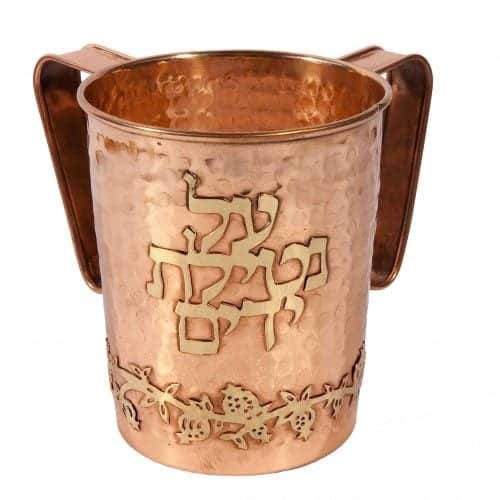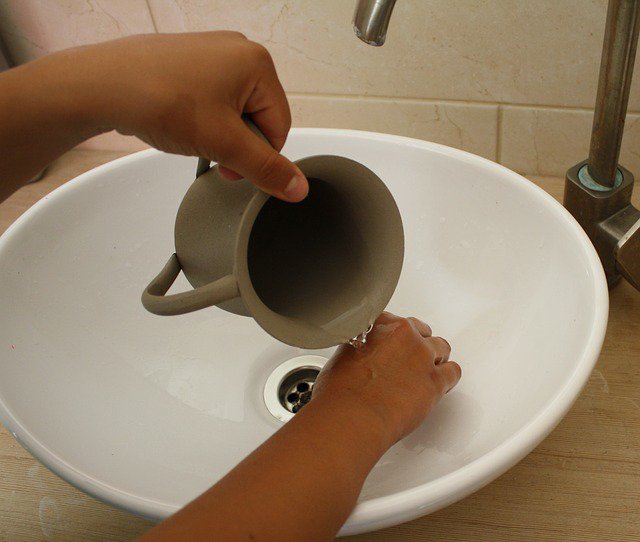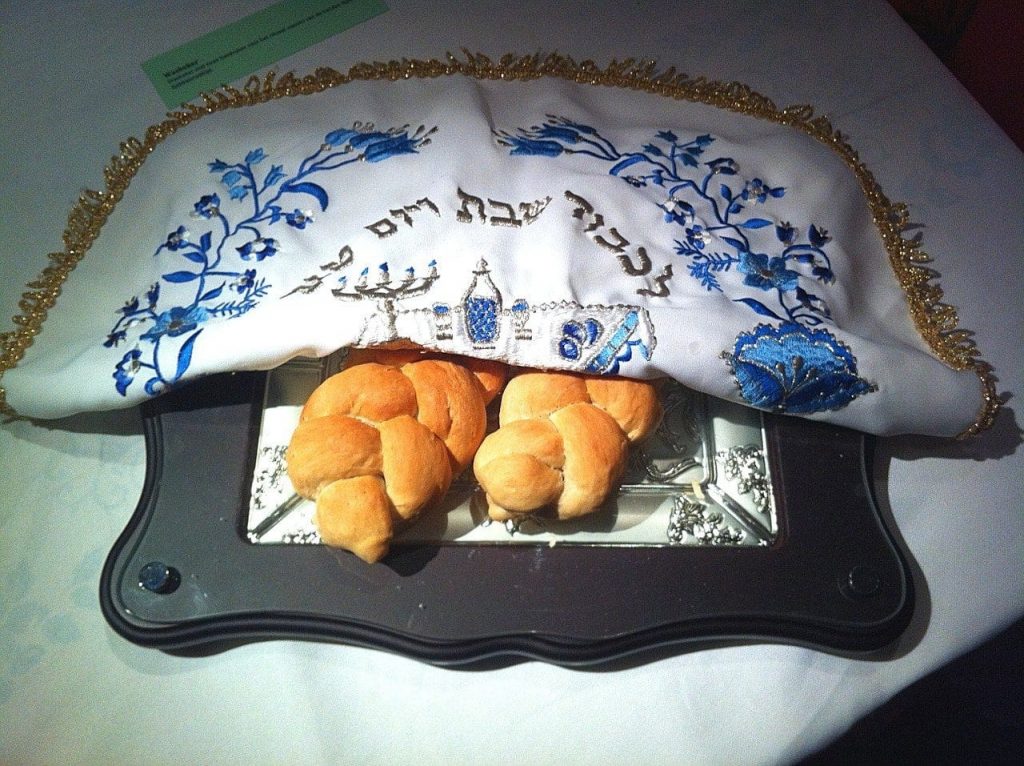No products in the cart.

In Hebrew, Netilat Yadayim means washing of hands. This is the practice of washing a person’s hand before eating Challah. The Challah is the fundamental human food and also one of the reasons for being special commandment of doing it.
If you think that hand washing is just a mere hygienic practice, think again. In Jewish custom, this is not the case. This practice is required before taking a meal wherein bread is usually served. Hand washing practice is the mainstay in the religious Jewish world and more than beyond the usual dining table.
The Netilat Yadayim is a hand washing ritual done upon waking up in the morning and before eating bread. Mayim Achronim and Netilat Yadayim are similar rituals in the Judaism of hand-washing. However, there is a minor difference between these two, and these include action and time of fulfilling and after which, Mayim Achronim is performed.
The custom of hand-washing in the Yiddish speaking communities is widely known “negel Vasser” , which signifies “nail water.” Washing subsequently after eating bread and also before Birkat Hamazon is called Mayim achronim, which signifies “after waters,” to be blessed and holy.
Table of Contents
show
In Judaism, the root of hand washing can be found in the book of Exodus 17-21, Temple sacrifices and services:

“And the Lord spoke to Moses, saying, “You shall also make a basin of bronze, and its pedestal also of bronze, to wash with; and you shall put it between the Tent of Meeting and the altar, and you shall put water in it. For Aaron and his sons shall wash there their hands and their feet. When they go into the Tent of Meeting, they shall wash with water, that they die not; or when they come near to the altar to minister, to burn offering made by fire to the Lord. So they shall wash their hands and their feet, that they die not; and it shall be a statute forever to them, to him and to his seed throughout their generations.”
The directions for the basin that need to be set up for the ritual washing of the hands and the feet of the priest is the first one mentioned in practice. In the above verses, failure to hand wash is linked with the possibility of death. This is the reason behind some individuals believing that the son of Aaron died in Leviticus 10.
Upon destroying the Temple, there is somewhat a change in the vital focus of hand washing. Without ritual objects as well as processes of sacrifices and these sacrifices, the priest was no longer able to wash his hands.
It is gotten from this segment that hand washing is a means of purifying ourselves and expelling detestable evil spirits from our fingers before petition or prayer and then lifting our hands ‘Netilat Yadayim’ profoundly, as what the High priests did in Jerusalem Temple.
There are a many different ways where the Jewish law requires hand washing. These ways might include:
- after napping or sleeping
- upon leaving the cemetery
- after going into the bathroom
- before a meal, when bread are involved
- after a meal when Salt of Sodum was used
Steps to Properly Washing Hands
- Do this just before eating meal with bread or matzah (the Halachah likewise requires washing before cake, if it is eaten as a full meal). Bread is viewed as staple food among all foods. Potatoes simply missed the boat.
- This might sound strange, however, before washing the hands, make certain that they’re perfectly clean and are free of whatever will block the water from reaching your hands’ entire surface. It’s a profound ordeal or an essential spiritual experience, you will recall beyond Pasteur.
- Remove your ring unless you’ve never removed them and in which case they’re considered part of your hands.
- Fill a glass with water and then pour twice in your right hand. You will then need to repeat this in your left hand. The Chabad custom often includes pouring multiple times on every hand. Ensure that the water will cover your whole hand until your wrist bone with every pour. Separate your fingers
- Allow the water slightly in the middle of them. Upon washing, lift your hands in chest-high and recite the following blessings:
Favored are you, Lord our God, King of the universe, who has blessed us with His decrees, and told us concerning the washing of the hands.
Blessed are you, Lord our God, King of the universe, who has sanctified us with His commandments, and commanded us concerning the washing of the hands.
(Baruch atah A-donay, Elo-heinu Melech Ha’Olam, asher kideshanu bemitzvotav vetzivanu al netilat yadayim.)
You can only say this if you plan to eat 1.3 ounce of bread.

- Rub your hands and afterward dry them. Be mindful so as not to talk or get associated with anything else until you have recited the blessings in your bread and you swallowed some as well.
- In case you plan to take some washroom break during a meal or soil your hands, you have to wash once more and this time, without a gift or blessing.
Mayim achronim includes its very own “how to,” which is less required than the regular hand-washing. For most kinds of hand washing, including hand-washing before a meal where you will be eating bread, you will need to follow these steps:
- Ensure that your hands are perfectly clean. This appears to be counterproductive, however, recall that netilyat yadayim(hand- washing) isn’t about neatness, yet about custom and ritual.
- Fill the washing container with enough water for both of your hands. In case you are a left-handed, start with your left hand. If right-handed, begin with the right hand.
- Pour water twice into your dominant hand and after that twice on the other hand. Some pour multiple times. Ensure the water will cover your whole hand to the wrist with every pour and then separate your fingers, so water touches your hand entirely.
- Upon washing, you better grab a clean towel and as you tend to keep your hands dry, recite the bracha or the blessing) “Baruch atah Adonai, Elohenu Melech Ha’Olam, asher kideshanu b’mitzvotav, vetzivanu al netilat yadayim.” In English, this is translated as: “Blessed are you Lord, our God, King of the universe, who has purified us with His precepts and told us in regards to the washing of the hands.”
Hand-Washing ceremonies and rituals don’t concentrate on being clean, but rather making a person more purified and holy. These distinctive and meaningful rituals should be performed several times per day and are proven to be intrinsic parts of the Jewish tradition separating the earthly from sacred through washing. It’s your choice as to how many and the events you wish to perform the Netilat Yadayim and the Mayim Achronim.
Your table is considered your altar and you’re the High Priest. Those plates of delightful morsels before you, this is called sacrifice. You will do the hand-washing rituals, utter a blessing on the foods and dig in to heighten all those proteins and carbs and turn them into a divine spiritual experience.
With all these pieces of information given, you probably understand better what Netilat Yadayim is all about.



